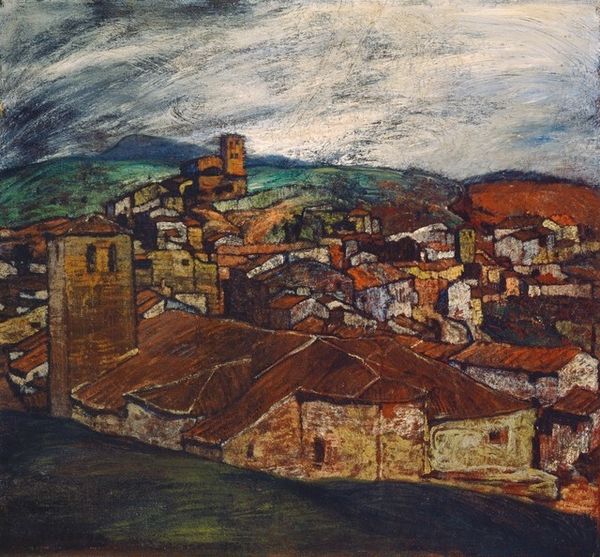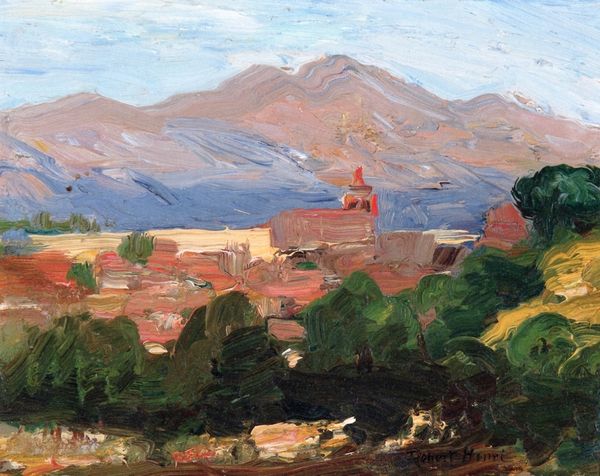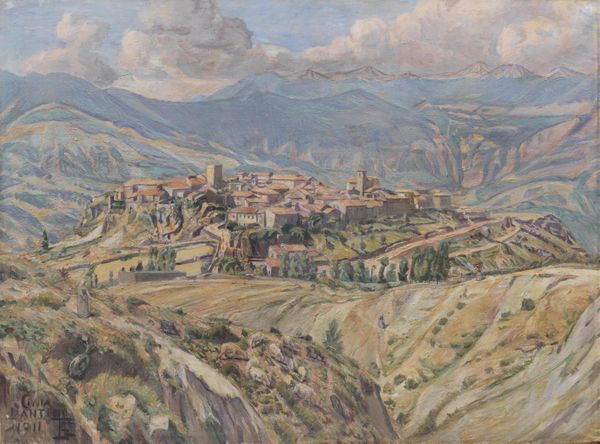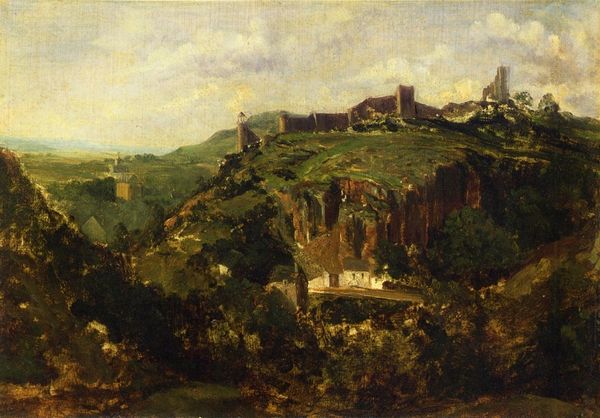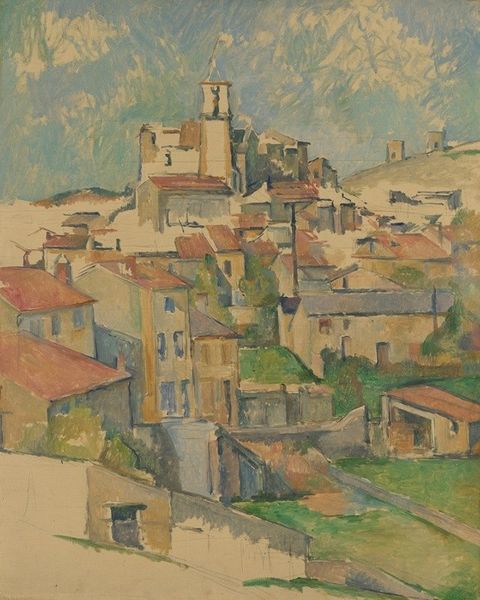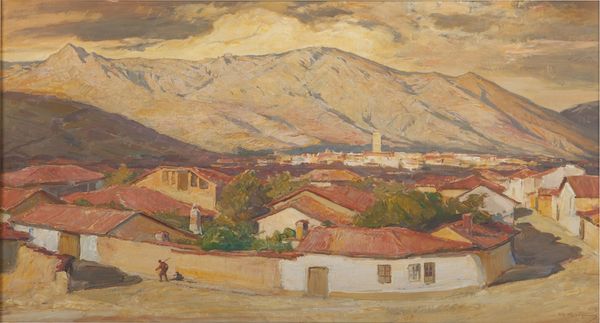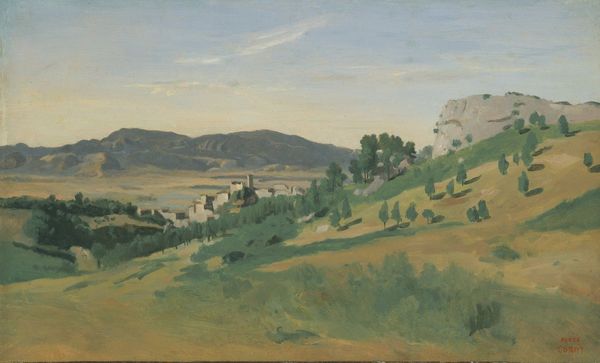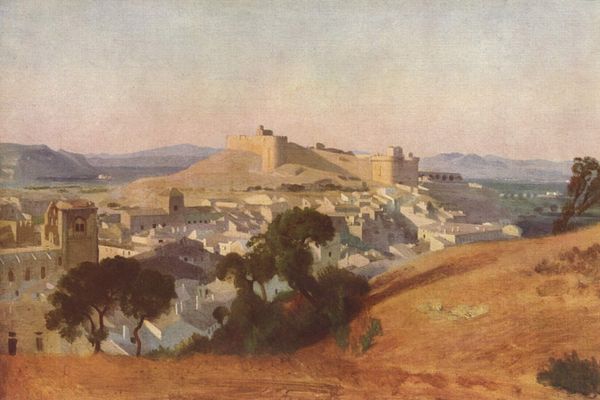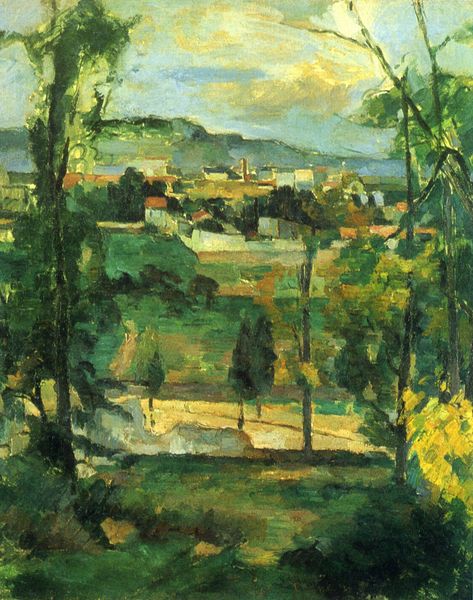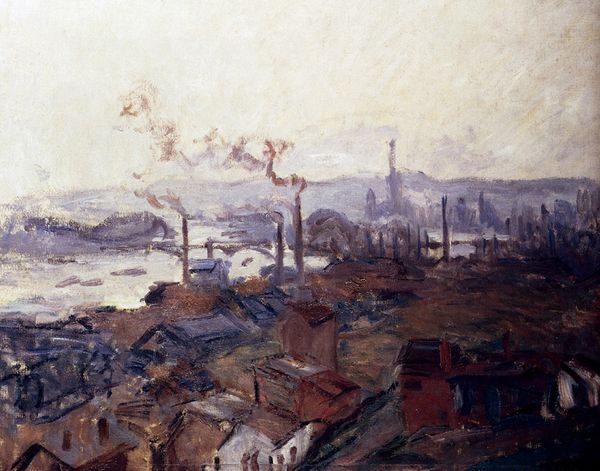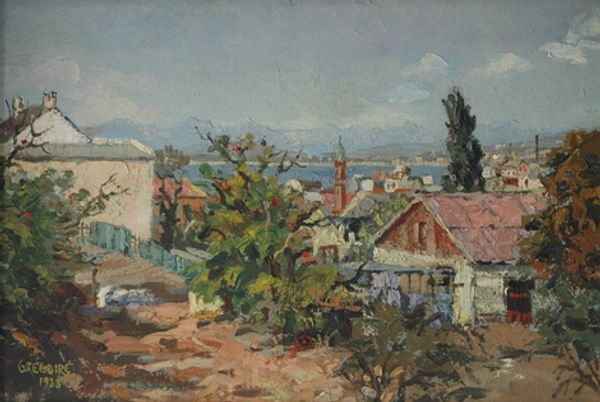
oil-paint, impasto
#
oil-paint
#
landscape
#
oil painting
#
impasto
#
cityscape
#
italian-renaissance
Copyright: Public domain
Curator: Standing before us is "Pompei," an oil painting by Fujishima Takeji. Editor: Immediately striking, isn’t it? There's a sombre stillness, like a city holding its breath under that expanse of sky. The ochre and olive tones speak of earth and enduring stone. Curator: Indeed. What’s particularly interesting is Takeji's choice of impasto technique, those visible strokes bringing a tangible sense of materiality. This isn't just a representation; it's an object, built up layer upon layer, just like the history embedded in Pompeii. It evokes a tangible quality – one could almost pick up fragments of history in each brushstroke. Editor: And within those deliberate layers, I see the story of time itself etched into the very image of this location, layering disaster, and slow decay as a potent symbol. You sense a melancholic reflection on time and loss through this historic site's depiction, almost a warning echoing from antiquity. Curator: It’s a testament to how materials themselves can convey meaning. Here, the Italian Renaissance influences become clear, particularly if we focus on production and craftsmanship, the physical engagement with oil-based paints – the legacy continues its craft, and even a cross-cultural dialogue occurs because Takeji was a Japanese artist depicting an iconic subject, yet we see Japanese principles embedded as well. Editor: I notice echoes of ruins in classical art, acting almost as ‘memento mori’. Do you also feel a slight touch of reverence towards a great civilization vanished quickly? This cityscape's impact arises more because of what isn't there. The composition shows the emptiness in the spaces of homes of the buried residents from thousands of years prior. Curator: I’d agree that reverence is embedded but perhaps through an objective recording instead of romanticism. Editor: Very true! Ultimately, seeing art, either created using material or represented via familiar themes and iconography, allows a broader connection to the continuous narrative. Curator: Absolutely, this encounter allows all of us to participate in a prolonged history!
Comments
No comments
Be the first to comment and join the conversation on the ultimate creative platform.

